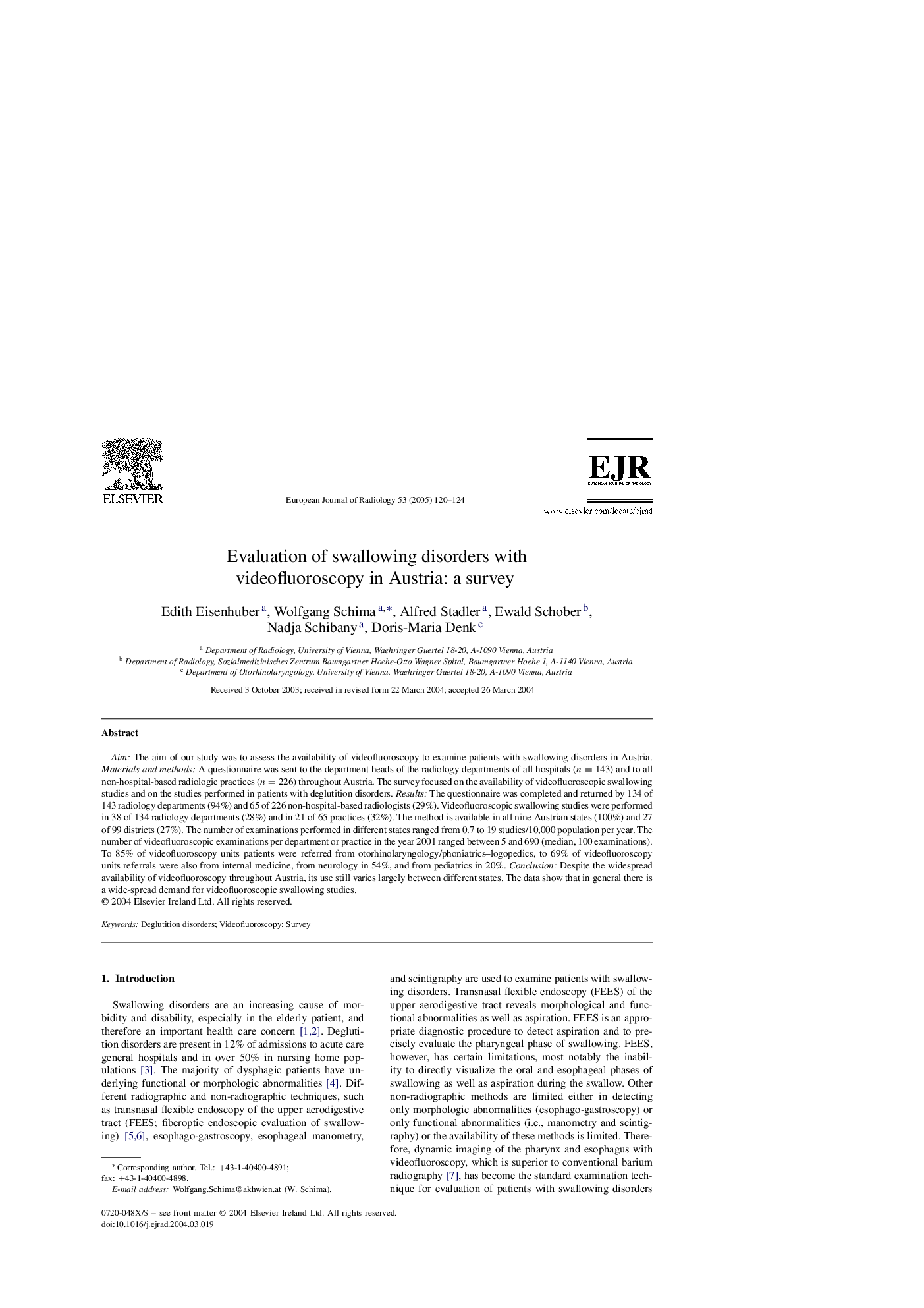| Article ID | Journal | Published Year | Pages | File Type |
|---|---|---|---|---|
| 10097655 | European Journal of Radiology | 2005 | 5 Pages |
Abstract
Aim: The aim of our study was to assess the availability of videofluoroscopy to examine patients with swallowing disorders in Austria. Materials and methods: A questionnaire was sent to the department heads of the radiology departments of all hospitals (n=143) and to all non-hospital-based radiologic practices (n=226) throughout Austria. The survey focused on the availability of videofluoroscopic swallowing studies and on the studies performed in patients with deglutition disorders. Results: The questionnaire was completed and returned by 134 of 143 radiology departments (94%) and 65 of 226 non-hospital-based radiologists (29%). Videofluoroscopic swallowing studies were performed in 38 of 134 radiology departments (28%) and in 21 of 65 practices (32%). The method is available in all nine Austrian states (100%) and 27 of 99 districts (27%). The number of examinations performed in different states ranged from 0.7 to 19 studies/10,000 population per year. The number of videofluoroscopic examinations per department or practice in the year 2001 ranged between 5 and 690 (median, 100 examinations). To 85% of videofluoroscopy units patients were referred from otorhinolaryngology/phoniatrics-logopedics, to 69% of videofluoroscopy units referrals were also from internal medicine, from neurology in 54%, and from pediatrics in 20%. Conclusion: Despite the widespread availability of videofluoroscopy throughout Austria, its use still varies largely between different states. The data show that in general there is a wide-spread demand for videofluoroscopic swallowing studies.
Related Topics
Health Sciences
Medicine and Dentistry
Radiology and Imaging
Authors
Edith Eisenhuber, Wolfgang Schima, Alfred Stadler, Ewald Schober, Nadja Schibany, Doris-Maria Denk,
